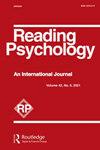Assessment of Inference Types (AIT): A New Test for Measuring How Well Students Make Inferences
IF 1
Q4 PSYCHOLOGY, EDUCATIONAL
引用次数: 0
Abstract
Abstract The authors of the Common Core State Standards and publishers of literacy programs focus on an essential aspect of comprehension, the process of drawing inferences. An inference refers to any piece of information that an author does not include in text but expects readers to use to make meaning. Four common inference types are anaphoric, background knowledge, predictive, and retrospective. To date, there have been group-administered test for teachers to use to evaluate children’s abilities to draw inferences, but none focuses on these inference types. The purpose of this study was to create a reliable instrument, and the Assessment of Inference Types (AIT) was the result. It includes four passages, two narrative and two informational. Each passage has eight items, two of each inference type. Unlike most assessments, it measures students’ abilities to make inferences moment-by-moment during the act of reading, instead of before or after. The AIT was administered to a 492 fifth graders and was shown to have a .902 reliability coefficient. Armed with results of this test, teachers can identify what specific inferencing processes children have mastered and ones with which they are struggling, and plan instruction accordingly.推理类型评估(AIT):衡量学生推理能力的新测试
摘要《共同核心国家标准》的作者和扫盲计划的出版商专注于理解的一个重要方面,即举一反三的过程。推理是指作者没有包含在文本中,但希望读者利用它来产生意义的任何信息。四种常见的推理类型是回指推理、背景知识推理、预测推理和回顾推理。到目前为止,已经有小组管理的测试供教师用来评估孩子的推理能力,但没有一个集中在这些推理类型上。本研究的目的是创建一个可靠的工具,推理类型评估(AIT)就是其结果。它包括四个段落,两个叙述和两个信息。每段文章有八个项目,每个推理类型有两个。与大多数评估不同,它衡量学生在阅读过程中,而不是在阅读之前或之后,一刻一刻地进行推理的能力。对492名五年级学生进行了AIT测试,结果显示其可靠性系数为.902。有了这项测试的结果,教师可以确定孩子们已经掌握了哪些具体的推理过程,以及他们正在努力的过程,并相应地计划教学。
本文章由计算机程序翻译,如有差异,请以英文原文为准。
求助全文
约1分钟内获得全文
求助全文
来源期刊

Reading Psychology
PSYCHOLOGY, EDUCATIONAL-
CiteScore
2.20
自引率
7.10%
发文量
28
期刊介绍:
Prepared exclusively by professionals, this refereed journal publishes original manuscripts in the fields of literacy, reading, and related psychology disciplines. Articles appear in the form of completed research; practitioner-based "experiential" methods or philosophical statements; teacher and counselor preparation services for guiding all levels of reading skill development, attitudes, and interests; programs or materials; and literary or humorous contributions.
 求助内容:
求助内容: 应助结果提醒方式:
应助结果提醒方式:


